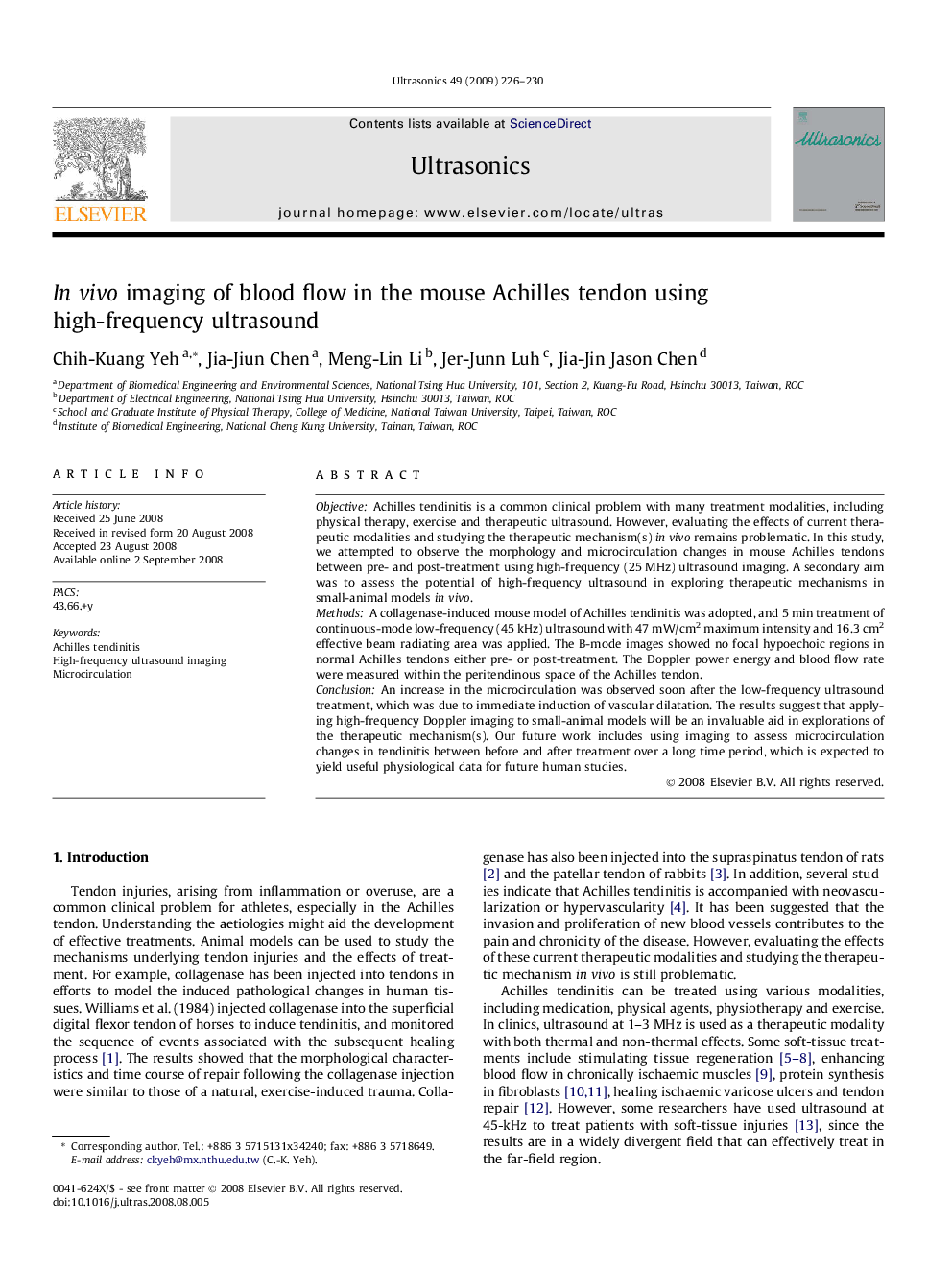| Article ID | Journal | Published Year | Pages | File Type |
|---|---|---|---|---|
| 1759063 | Ultrasonics | 2009 | 5 Pages |
ObjectiveAchilles tendinitis is a common clinical problem with many treatment modalities, including physical therapy, exercise and therapeutic ultrasound. However, evaluating the effects of current therapeutic modalities and studying the therapeutic mechanism(s) in vivo remains problematic. In this study, we attempted to observe the morphology and microcirculation changes in mouse Achilles tendons between pre- and post-treatment using high-frequency (25 MHz) ultrasound imaging. A secondary aim was to assess the potential of high-frequency ultrasound in exploring therapeutic mechanisms in small-animal models in vivo.MethodsA collagenase-induced mouse model of Achilles tendinitis was adopted, and 5 min treatment of continuous-mode low-frequency (45 kHz) ultrasound with 47 mW/cm2 maximum intensity and 16.3 cm2 effective beam radiating area was applied. The B-mode images showed no focal hypoechoic regions in normal Achilles tendons either pre- or post-treatment. The Doppler power energy and blood flow rate were measured within the peritendinous space of the Achilles tendon.ConclusionAn increase in the microcirculation was observed soon after the low-frequency ultrasound treatment, which was due to immediate induction of vascular dilatation. The results suggest that applying high-frequency Doppler imaging to small-animal models will be an invaluable aid in explorations of the therapeutic mechanism(s). Our future work includes using imaging to assess microcirculation changes in tendinitis between before and after treatment over a long time period, which is expected to yield useful physiological data for future human studies.
